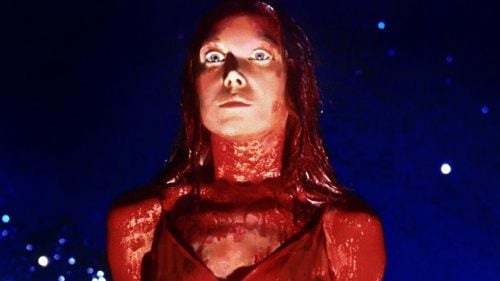The Soil Of A Man’s Heart: Mary Lambert’s PET SEMATARY (1989)
In 1984, The New York Times reported that the rights to Stephen King's latest blockbuster horror novel had been sold to George A. Romero for “a handshake, a token payment of roughly $10,000, and a healthy share of profits from the movie.” This purchase followed the horror author and zombie king collaborating on the seminal EC Comics anthology Creepshow ('82), and came roughly half a decade after the Pittsburgh maverick dropped off the adaptation of Salem's Lot ('79). Tobe Hooper famously took over the latter, transforming that sleepy New England vampire opus into one of the great two-part Movies of the Week in the history of television.
The book in question was Pet Sematary, a rather bleak cogitation on death, grief and the secrets men keep that was so nasty, both King and his wife Tabitha thought it best that the novel went unpublished. In fact, the book hit shelves mostly due to a royalties dispute with Doubleday, as King pulled the manuscript out of the drawer he'd been keeping it in so that the publisher would cough up some back pay in one lump sum. Romero set the project up at AVCO Embassy Pictures, adhering to a few stipulations King had put into place when selling his friend and creative partner the rights: the author had to pen the screenplay, and the movie needed to be shot in Maine (as King viewed the production as a means to pay back the state he proudly called home).
Though the script was, in the words Embassy Executive Lindsay Doran, "one of the greatest [she'd] ever read", the film stalled, due to the studio thinking that the popularity of Stephen King movies had passed, and that the story (which kills both children and cats with equal mercilessness) was just too severe for mainstream audiences. Romero pushed to move the project forward, but eventually exited during Pet Sematary's lengthy stay in proverbial Development Hell, crafting Day of the Dead ('85) and Monkey Shines ('88) in the meantime. By the time Doran got the picture going at Paramount – courtesy of the '88 WGA Strike manufacturing a dearth of new screenwriting material to work from – Romero was already committed to Orion Pictures for two movies (which would ultimately produce his take on King's The Dark Half ['93]).
During the ‘80s, Mary Lambert made an entire career out of music videos, becoming one of Madonna's go to directors and aiding the pop star's meteoric MTV rise (resulting in iconic clips for "Borderline", "Like A Virgin", "Material Girl" and "La Isla Bonita"). The Arkansas native established an eye for provocative, soft focus photography that she turned into a calling card, stepping behind the camera for Janet Jackson ("Nasty"), Chris Isaak ("Dancin"), and Rod Stewart ("Love Touch") as well. She only had one feature under her belt – the somewhat slight but diverting amnesia mystery Siesta ('87) – yet her pitch to Paramount won the studio over. Lambert didn't see King's screenplay as a straight horror picture (and, in fact, wasn't really a fan of the genre at all). Instead, her take was transmuting it into a tragedy about the inevitability of death and the psychological trauma inflicted on those who survive past their loved ones.
The end result honestly takes a little bit from Column A (upsetting horror show) and a little bit from Column B (soapy melodrama), amalgamating into a rather peculiar potion that borders on high camp, yet contains enough visceral nastiness to never let the movie tip over into pure silliness. Though King's script excises the "Wendigo" portions of his original novel, what remains is a rocket-fueled narrative trajectory, which sees the good doctor Louis Creed (Dale Midkiff) attempt to cheat death after his daughter's cat Winston Churchill (or "Church", for short) and cute as a button baby boy Gage (Miko Hughes) are both struck down in a busy service road by the tractor trailers which roar down it, seemingly every fifteen minutes. Welcome back to Stephen King Country, where nobody is safe.
Perhaps the most impressive element of Pet Sematary is how it perfectly captures the spooky quiet of King's rural Maine, via a mixture of location shooting – manned by Friday the 13th Part II ('81) cinematographer Peter Stein (who’d also shoot King’s Graveyard Shift [‘90]) – and casting (with many locals from Bangor, Hancock and Ellsworth being recruited to fill minor roles). At the center of this haunted, blue collar vista are Louis and his wife Rachel (Denise Crosby), both almost coming off like the Sirkian epitome of Windy City slickers, just looking for a picturesque place to settle down and live out their days. With Gage and their daughter Ellie (twins Blaze and Beau Berdahl) in tow, they make for a perfect American Gothic familial unit, the core of which will be quickly eaten away by Dr. Creed's own twisted version of a "Monkey's Paw" scenario*.
Lambert’s feminine touch might shine through best when it comes to the characters of Louis and Rachel, as she views them as these symbols of marital purity that become corrupted, thanks to Dr. Creed’s refusal to let his wife in on their new home’s dark powers. Her lens frames Midkiff as a hunky, bland everyman, while Rachel grows increasingly concerned with her perfect beau’s suspicious activities (such as sending her and the kids away to her parents’ not once, but twice). When we arrive at Pet Sematary’s climactic reel, with Rachel rushing home – all while being guided by the angelic ghost of Victor Pascow (Brad Greenquist), Louis’ lost patient – Lambert truly lets us feel the character's harried panic. Suddenly, a woman’s intuition combines with supernatural oversight, and only a female director is able to convey this gut instinct so naturalistically.
However, beyond the aura of King's New England universe being replicated with lumpy charm, Fred Gwynne might craft the ultimate screen iteration of the author's working class caricatures in Judd Crandall, the Creeds’ new neighbor across the way. Sporting an accent so thick you need a butcher's knife to cut through it, Gwynne's warmth and kindness often mask the fact that his tours of the titular furry graveyard (and the Micmac burial ground that lies beyond its borders) are really what set the story's evil mechanizations in motion. Judd is both the local historian and front porch therapist, spinning yarns about resurrected World War II soldiers before consoling Louis after his little boy dies, trying to talk him out of bringing his baby back in the same way they resurrected Church (after peeling the cat from the frost in Crandall's front yard). "Sometimes dead is better," Gwynne croaks, cementing his place in pop culture history in perhaps an even more defining fashion than his turn as Herman Munster.
Of course, there wouldn't be a third act if Louis actually planted Judd's advice into the stony soil of his heart. When Pet Sematary transitions into being a full-blown horror movie, Lambert acquits herself with set pieces that are expertly staged and stuffed with scarring imagery. To be fair, King does a good deal of the heavy lifting himself, crafting a reborn Gage into a memorable movie monster on the page; the demonic tot grabbing scalpels and slicing heels and faces with giggly glee. Yet it’s the aftermath of these heinous happenings that are just as horrific, as Louis is forced to put this little pup down once and for all, before his wife is killed and brought back in oozing, disgusting fashion. So, while Lambert may not have wanted to make a straight spook show, the young director proved she’s still pretty great at it, regardless of intent or lack of affection for the genre.
Anybody who’s read a bunch of King work knows he’s a massive Ramones fan. The story goes: King invited the punks to his Bangor, Maine mansion as they were touring in New England. During the visit, he gave Dee Dee Ramone a copy Pet Sematary, and the bassist disappeared into the basement. An hour later, the songwriter showed back up with the lyrics to the movie’s closing theme, which is cued up immediately following the story’s incredibly bleak finale. It’s a weird but fitting note to end on, nodding toward both King and Lambert’s musical backgrounds, while giving late ‘80s audiences a tune to nod their heads to as they file out of the theater. Pet Sematary would become a rather sizable hit for Paramount, spawning a somewhat underrated sequel (which Lambert would return for) after gifting an entire generation a new tank of cinematic nightmare fuel. So, while we approach the impending remake, never forget that Lambert’s vision already combined perfectly with King’s to deliver one of the absolute best translations of his words to the silver screen.
*W.W. Jacobs' classic 1902 short story was just one of a few influences on Pet Sematary, along with Bram Stoker's Dracula, Mary Shelley's Frankenstein, and Robert Louis Stevenson's Strange Case of Dr. Jekyll and Mr. Hyde, all of which King was teaching as a writer in residence at the University of Maine while penning the novel.
Pet Sematary is available now on Blu-ray and to stream.



